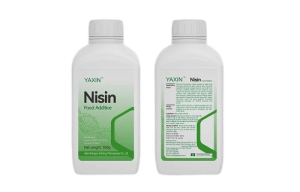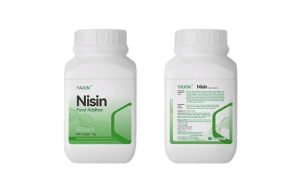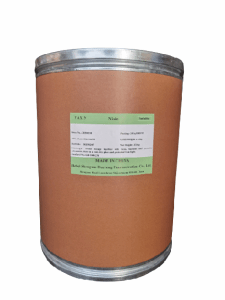
 CONTACT
CONTACT
- Linkman:Linda Yao
- Tel: +8618231198596
- Email:linda.yao@dcpharma.cn
- Linkman:CHARLES.WANG
- Department:Overseas
- Tel: 0086 0311-85537378 0086 0311-85539701
ε-Polylysine Hydrochloride Pricing,Food Nutrition
TIME:2024-12-20ε-Polylysine hydrochloride, a natural preservative, has been widely applied in the food industry. It is extracted from controlled fermentation broths of Streptomyces albulus or Streptomyces diastatochromogenes. Composed of 25–35 L-lysine residues as a homopolymer, its hydrochloride form is known as ε-polylysine hydrochloride.
Ⅰ.Functional Properties
·Broad-Spectrum Antimicrobial Activity: It exhibits significant inhibitory effects against Gram-positive and Gram-negative bacteria, yeast, and molds.
·High Thermal Stability: Remains stable even under high-temperature conditions (e.g., 121°C for 30 minutes).
·Strong Water Solubility: Easily dissolves in water without affecting the flavor of food.
·Wide pH Range: Maintains strong antimicrobial activity across a pH range of 2–9.
·High Safety: After consumption, ε-polylysine can degrade into lysine nutrients in the human body and be absorbed and utilized.
Ⅱ.Compatibility with Food Nutrients
1. Compatibility with Amino Acids
ε-Polylysine itself is composed of lysine residues, making it highly compatible with other amino acids in food.
It does not chemically react with amino acids or compromise their nutritional value.
2. Compatibility with Vitamins
ε-Polylysine hydrochloride generally does not interact adversely with vitamins.
It can be added to food alongside vitamins to enhance both nutritional value and preservation effects.
3. Compatibility with Minerals
ε-Polylysine hydrochloride is compatible with common minerals such as calcium, iron, and zinc.
These minerals retain their activity and do not form harmful substances when combined with ε-polylysine hydrochloride.
4. Compatibility with Carbohydrates
ε-Polylysine hydrochloride can coexist with carbohydrates such as sugars and starch.
It does not alter their chemical properties or nutritional value.
5. Compatibility with Fats
ε-Polylysine hydrochloride typically does not chemically react with fats.
It can coexist with fats in food without negatively affecting their stability or nutritional value.
Ⅲ.Considerations in Practical Applications
·Dosage: Although ε-polylysine hydrochloride is highly compatible with food nutrients, excessive use may affect the taste and flavor of food. Therefore, its dosage must be strictly controlled in practical applications.
·pH: While it maintains antimicrobial activity within a pH range of 2–9, its effectiveness may vary under specific pH conditions. The pH of the food should be considered when adding ε-polylysine hydrochloride.
·Temperature: High temperatures may impact its antimicrobial activity. In heat-treated foods, temperature and time should be carefully managed to ensure the stability of ε-polylysine hydrochloride.
ε-Polylysine hydrochloride exhibits excellent compatibility with food nutrients and can be safely added to improve preservation effects and nutritional value. However, attention must be paid to factors such as dosage, pH, and temperature in practical applications to optimize its effectiveness.
- Tel:+8618231198596
- Whatsapp:18231198596
- Chat With Skype







